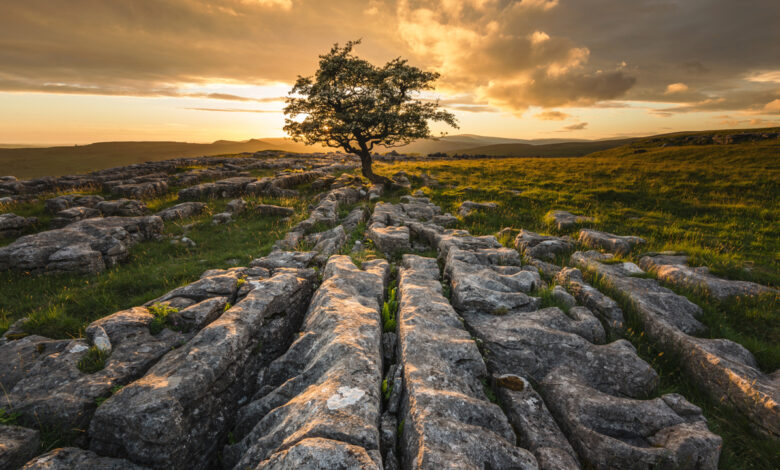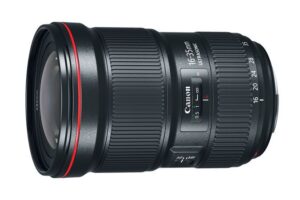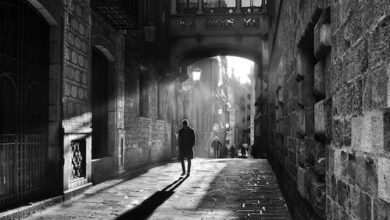Best Lenses for Landscape Photography :Exploring the World0

Best Lenses for Landscape Photography serves as a visual storyteller, unraveling the magnificence of nature through meticulous compositions and precise optics. Choosing the right lens becomes an integral part of this storytelling process, allowing photographers to frame and immortalize sprawling vistas, dramatic skylines, and intricate details of the natural world.
The Focal Length Conundrum
Focal length determines the field of view and perspective of a lens. While wide-angle lenses excel in encompassing expansive scenes, telephoto lenses bring distant elements closer, highlighting details and compressing perspective. For landscapes, wide-angle lenses reign supreme, allowing photographers to capture the sweeping grandeur of nature.
Canon EF 16-35mm f/2.8L III USM
Canon’s prowess in lens engineering shines in this versatile lens. The EF 16-35mm f/2.8L III USM delivers exceptional sharpness and a flexible focal range, making it an excellent companion for landscapes. Its wide-angle capability and fast aperture ensure stunning results even in challenging lighting conditions.

Prime vs. Zoom Lenses: A Debate
Prime lenses, with a fixed focal length, often boast superior optical quality and wider apertures, providing exceptional sharpness and clarity. Conversely, zoom lenses offer versatility by covering various focal lengths in one package, providing flexibility in framing compositions without changing lenses frequently.
Sony FE 16-35mm f/2.8 GM
Sony’s commitment to innovation reflects in this lens, offering exceptional optics for landscape aficionados. With a wide-angle perspective and a fast f/2.8 aperture, the FE 16-35mm f/2.8 GM captures stunning clarity and detail, making it a standout choice for scenic photography.

Optical Excellence: Factors Beyond Focal Length
Beyond focal length considerations, factors like lens sharpness, distortion control, and weather sealing play pivotal roles in lens selection. Sharpness ensures clarity and detail throughout the frame, while effective distortion control minimizes unwanted aberrations, maintaining the integrity of landscapes.
Tackling the Aperture Dilemma
Aperture dictates the amount of light entering the lens and influences depth of field. For landscapes, smaller apertures (larger f-stop numbers like f/11 or higher) are preferred to achieve maximum depth of field, ensuring that foreground elements to distant horizons remain sharply in focus.
Lens Stabilization and Weather Resistance
Lens stabilization systems, such as Vibration Reduction (VR) or Image Stabilization (IS), reduce camera shake, especially beneficial in handheld shooting or low-light conditions. Additionally, weather-sealed lenses offer protection against dust, moisture, and harsh environmental conditions, crucial for outdoor photography.
Unveiling the Artistry: Beyond Technicalities
While technical aspects are crucial, artistic vision remains paramount. Understanding the interplay of light and shadow, leveraging golden hour or blue hour for ethereal lighting, and incorporating leading lines or natural framing techniques contribute immensely to creating captivating landscapes.
Environmental Considerations and Ethical Practices
Responsible landscape photography emphasizes ethical practices. It involves respecting nature, leaving no trace, and prioritizing conservation efforts. Avoiding sensitive ecosystems and adhering to designated paths preserve the pristine beauty of landscapes for future generations.
Budget-Friendly Alternatives and Experimentation
While high-end lenses offer remarkable performance, entry-level or older models can also yield impressive results without straining your budget. Experimenting with different lenses allows photographers to discern distinct characteristics, aiding in personalizing their photographic style.
Conclusion
Landscape photography transcends mere visual documentation; it embodies an emotional connection with nature’s splendor. The lens becomes a conduit between the photographer’s vision and the majestic landscapes they aim to capture. From technical precision to artistic finesse, selecting the right lens empowers photographers to encapsulate the timeless beauty of nature and share its wonders with the world.
Through the lens, embark on a transformative journey, narrating stories of awe-inspiring landscapes, and immortalize the ever-changing tapestry of nature’s artistry.




